Debt Relief Specialist wants to share a settlement letter from PayPal/Comenity Capital. Bal. $3606.50 Offer $1040.00 Savings $2566.50

Debt Relief Specialist wants to share a settlement letter from PayPal/Comenity Capital. Bal. $3606.50 Offer $1040.00 Savings $2566.50

Debt Relief Specialist wants to share a settlement letter from Navy Federal Credit Union. Bal. $17,598.68 Offer $5200.00 Savings $12,398.68
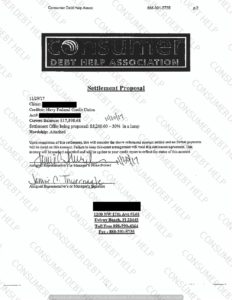
Debt Relief Specialist wants to share a settlement letter from Navy Federal Credit Union. Bal. $26,010.77 Offer $7804.00 Savings $18,206.77
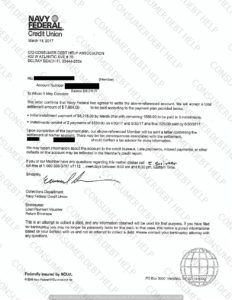
Debt Relief Specialist wants to share a settlement letter from Macy’s/Citibank. Bal. $1851.03 Offer $740.41 Savings $1110.62
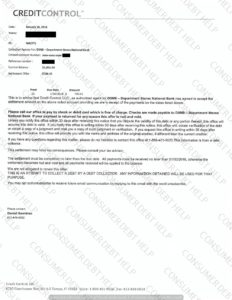
Debt Relief Specialist wants to share a settlement letter from Macy’s/Citibank. Bal. $1993.44 Offer $700.00 Savings $1293.44
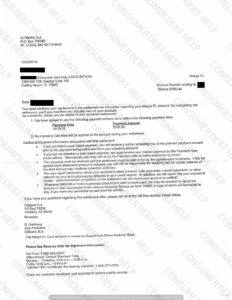
Debt Relief Specialist wants to share a settlement letter from Juniper/Barclays Bank. Bal. $4368.58 Offer $1529.00 Savings $2839.58
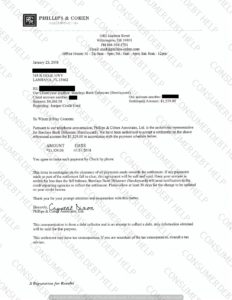
Debt Relief Specialist wants to share a settlement letter from Juniper/Barclays Bank. Bal. $1638.33 Offer $574.00 Savings $1064.33

Since I’m in the process of rebuilding my credit, I thought I’d walk you through some of the steps I’m taking to meet my credit goals.
Please understand that there is no “quick fix” for your credit. Your credit report is created based on your use of money, whether responsibly or irresponsibly. You can, however, put in extra effort by disputing incorrect or out-of-date items on your report, paying off debts, and acquiring one or two new trade lines where you may be lacking. To the rest, I’ll say, “Time heals all wounds.”
My Credit History
Historically, I’ve had dismal credit, but I was able to build it back up to excellent credit with a credit score of over 750. Realistically, I see myself doing that again, because I know it just takes a little time and organization, and I’m not starting from the bottom. My scores range from poor to fair, so I have a bit of a head start.
In the last 5 years or so, I’ve had some derogatory marks added to my reports. I’ve also not had any credit cards, BUT I also have no debts (which is good and bad). This is a big reason my credit is lacking, because this affects my “credit history”, which is an important factor in deciding my credit score, but there are deciding factors. According to FICO, these are the top 5 to consider, in order of importance:
These topics cover many more details that you can find on the Fico Website, but essentially, they will be the most important to you. I would like to add that too many hard inquiries may have a mild negative impact, and public records may have a significant negative effect on your credit score. Public records include liens, judgment, and bankruptcies.
Where to Start When Rebuilding
The first thing you’ll want to do is get your hands on all three of your credit reports and scores, if you don’t already have current copies. You can get all three reports (no scores) through annualcreditreport.com for free, every 12 months, or you can order them directly through the credit bureaus’ websites. Experian offers all three reports with scores for 39.95. Or there are many credit monitoring sites that you can pay a small monthly fee and get updated information monthly on all changes to your report..
DEBTS: If you have unpaid balances, charge-offs, and/or are in collections. This will continue to be a derogatory mark on your credit report. This is absolutely step #1 in improving credit. ALL DEBTS MUST BE PAID, or settled with a $0.00 balance. If they’re not, stop here, and get a plan together today.
Once you have your reports, look over them for inaccuracies. If you find that you may need to dispute inaccuracies or out-dated information, simply dispute the information with the credit bureaus directly. This is the first thing you want to do – clean it up and make sure everything is accurate and updated. The information reported will vary from one credit report to the next, so be thorough.
Next, you’ll want to set some credit goals, and to do that, you need to locate the part of your report that talks about why your score is low. It will usually be titled something like “understanding your score” or “factors affecting your score”. This will let you know what is hurting your credit and what you can do to improve it. Some things will not be able to change. For example, one of mine is “insufficient information on a mortgage account”, which I can’t do anything about since it’s an old (and closed) account. A different bureau has no items to display for me to improve on, which sounds great, but leaves me feeling lost with a mediocre score. What this tells me is there is nothing hurting my score, but I definitely need to still build up my credit responsibly. <— my new goal!
New Revolving Credit Tradelines
Once any disputes are completed to your satisfaction and you have your goals in mind, it’s time to take action. For me, since having no revolving credit was hurting me, I decided to get a secured card through Discover for $500 and only use it at a 10-15% debt-to-credit ratio, meaning I never charge more than $50-$75 on it each month, and pay it off completely and on time. After six months, I can be reevaluated for a larger credit line. After one year, I may qualify for an unsecured card with them based on my payment history. This is a great way to be smart about revolving credit while giving your credit score a lift!
And, I did a lot of research before choosing Discover to help build my credit. Not only are there the above-mentioned features, but I also earn 1% cash back and get to view my FICO score for free through their partnership with TransUnion. It’s a win-win for all involved.
Whatever you do, don’t apply for multiple revolving accounts in a short period of time, as this appears as though you need credit. I only applied for one secured card and will wait 6 months before considering any other revolving accounts. Generally speaking, new accounts may temporarily show negatively on your credit report until around 90 days of on-time payments.
Installment Loans
I was already in the market for a “new” used car for my oldest daughter, and it occurred to me that this may be an opportunity to help build my credit by financing. At first, I was concerned that my credit may not allow the financing, but I soon learned that “fair” scores are considered “good” in a car dealership.
I got a 7.24% interest rate, which isn’t awful, but that’s not really the point. The point is the bank will make a little money off of me, and in return, I will use them to build up my credit. Another win-win!
I didn’t want to be in debt with this purchase or pay massive interest, so I saved up the money in advance and put it in a separate savings account. I put a nice down payment on it (banks like to know you have cash to put down), and was able to finance the rest over 48 months. Of course, I’ll be paying it off in less than a year without penalty, but don’t tell the financing company!
The Bottom Line
I don’t believe credit is essential to life, but it’s definitely essential to qualifying for a mortgage. Most other things you can reasonably save up for, even a used car. Only buy what you can truly afford, even if you finance it, and pay on time, every time.
Everyone makes mistakes, even with credit, or especially with credit, but it can be re over time, and with a little patience and forethought.
Consumer Debt Help Association has been operating out of the Delray Office since the company was formed in 2009. Unfortunately at that time with a new business renting was the only option. Since the company is such an established business now, and growing, almost ten years later, we were fortunate enough to purchase a building in the neighboring town of Lantana to make our permanent home. Please send all correspondence to this new address moving forward. Thank you for your trust and we will continue to work our hardest to obtain the lowest settlements possible for you and to get you out of debt is the shortest amount time that we can.
New Address –
Consumer Debt Help Association
516 N. Dixie Hwy
Lantana, FL 33462
I was recently looking through last year’s check registers for confirmation of a payment I had made when I noticed my handwriting on several pages looked odd. It took me a moment to realize why: at the time, my right hand was in a cast and I had been writing with my left.
I remembered how grueling that month felt. Just about everything I did was more difficult and time-consuming, and I just couldn’t wait for the day until I got my cast off. In time, my hand healed. And although it had happened just a year before, it now felt like a distant memory.
Time can help heal your credit, too. The mistakes you’ve made, or the financial troubles you’ve experienced, may be terribly painful right now. They may feel all-consuming. You may be frustrated, angry or just plain worn out. And you may feel like you’ll never have good credit again. But eventually, those memories can fade, too.
Here are three ways time can help heal your credit.
Some Information Disappears
After a certain period of time, negative information can no longer be reported. Generally, that time period is about seven years with these caveats:
As long as the dates reported for the negative items on your credit reports are correct, you probably won’t have to do a thing to make them disappear. They will automatically be removed, and once they are, it will be as if they didn’t exist. They can no longer impact your credit scores.
In The Meantime, It’s Old News
No matter how annoying it may be to see negative information every time you get your credit reports, keep in mind that this information often has less impact on your credit scores over time.
“An awful lot of people assume that because information stays on a credit report for seven years … all that data is equally important all the way through the seven years,” says Barrett Burns, CEO Of VantageScore. But that perception is generally wrong. “As data gets older it slowly loses predictive value,” he says. In other words, it will likely have less of an impact on your scores over time.
In fact, VantageScore crunched the numbers to help illustrate the impact, over time, of various actions on credit reports. For example, a missed payment could cause a VantageScore credit score to drop by 50%, but it could recover in about a year and a half. (The impact won’t be the same for everyone, though. It will depend on the contents of their credit reports. Often someone with a higher credit score will see a larger drop when negative information appears on their reports, compared to someone with a lower score.)
In other words, that credit card payment you missed five years ago may seem like a bigger deal to you than it really is.
In 2011, FICO published estimates of how long it would take FICO credit scores to recover from mortgage-related problems and found that “In general, the higher (the) starting score, the longer it takes for the score to fully recover.”
For example, it would take an estimated nine months for a consumer with a starting FICO score of 680 to bounce back from the impact of a 30-day late mortgage payment, while it would take an estimated 2.5 years for someone with a starting FICO score of 720 to recover. Someone whose FICO score was 780 when they missed that payment could take three years to get back to where they were.
You Build Experience
One of the five major factors that make up your credit scores is the age of your accounts. Here, you get “credit” so to speak, for having experience with credit. This factor looks at the average age of all your accounts as well as the age of your oldest account. And time is your friend. The longer you’ve had your accounts, the better you can score for this factor.
There is a caveat here, too, however. If all the information on your report is negative, then when it’s no longer reported you’ll start all over again. That’s why even if you have been through bankruptcy, it can be a good idea to (cautiously) get back in the saddle again and establish a positive credit reference, even if it’s with a low-limit secured credit card. Otherwise, when your negative accounts are no longer reported, you could find yourself with little or no credit history.
How to Make Time Your Friend
Burns says that in providing data about how time affects credit scores, VantageScore wants to “give people hope that they can get back on their feet in a reasonable period of time and to give them a path to get there.” So how can you take advantage of Father Time?
Christina Goethe, director of communications for FICO, sums it up this way: “Raising your FICO scores after a poor mark on your report or building credit for the first time will take patience and discipline, but it can be done. The best way to get there is for an individual to consistently pay their bills on time, to keep their overall debt as low as possible and judiciously apply for new credit.”
copyright 2024 Consumer Debt Help Association - 516 N. Dixie Highway, Lantana, FL 33462. All Rights Reserved